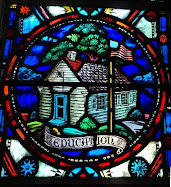MATH SKILLS CHECKLIST
3RD - 5TH GRADES
by Virginia Knowles
from Common Sense Excellence
Practice and review the skills listed above with increasing difficulty of problems.
Recognize, read and write numerals to 999,999.
Read and write word numbers (one hundred twenty-two thousand, four hundred)
Write numbers with expanded notation (5,931 = 5,000+900+30+1)
Read and write Roman numerals to 100 or higher.
Create a simple graph or chart to express mathematical information.
Do two and three digit addition and subtraction with regrouping (carrying or borrowing).
Introduce decimals (tenths, hundredths) and show how to line up for addition.
Round numbers to the nearest 10, 100 and 1000.
Use estimation for arithmetic problems and know when this is appropriate.
Memorize multiplication facts up to 12 X 12.
Recognize whether a number up to 100 is a prime or composite.
Learn multiplication terminology: multiplicand, multiplier, product, factor, multiple.
Multiply two and three digit numbers with or without regrouping.
Multiply by 10s, 100s, 1000s.
Multiply numbers with decimals, and count digits to the right of the decimal points in the multiplicand and multiplier to determine the placement of the decimal in the final product.
Find common multiples and lowest common multiple.
Learn division terminology: dividend, divisor, quotient, remainder.
Memorize division facts with quotients up to 100.
Do long division with or without remainders.
Know the fraction terms numerator and denominator.
Reduce fractions to lowest terms (6/8 = 3/4).
Compare fractions with like denominator.
Find a common denominator for fractions.
Add and subtract fractions.
Multiply and divide fractions.
Convert mixed numbers to improper fractions, and improper fractions to mixed numbers.
Convert fractions to decimal numbers, and decimal numbers to fractions.
Read and create simple graphs (pictograph, line graph, bar graph).
Convert between units of length measurement (1 ft.=12 in., 1 m.=100 cm., etc.).
Convert between units of weight measurement (1 lb.=16 oz., 1 g.=1000 mg., etc.)
Convert between units of volume measurement (1 c.=8 oz., 1 l.=1000 ml., etc.)
Tell time to the minute.
Compute elapsed time (clock or calendar).
Understand the concept of time zones and convert between them.
Calculate perimeter of polygons.
Calculate area of squares, rectangles and triangles.
Identify lines of symmetry in a shape.
Identify points, line segments, parallel lines, intersecting lines, perpendicular lines and rays.
Identify the center, radius, and diameter of a circle.
Solve for a variable (n+3=9, so n=6).
This list is from my book Common Sense Excellence: Faith-Filled Home Education for Preschool to 5th Grade.
You might also like to see: Math Skills Checklist from Preschool to 2nd Grade
Just a few others notes from my math chapter...
"I want my children to develop a sense of wonder as they explore math concepts, as well as lay a solid foundation for further study. Math may seem like such a neutral subject, but its fascinating principles reflect our Creator’s design. Math teaches us about equity, order, structure and absoluteness. Gaining excellence in this area enables us to be people of integrity and accuracy in a world where cheating and shortcuts are too easy. Children who have a hard time seeing the relevance of the worksheet in front of them may gain a new appreciation and motivation for math if they see that these skills are vital for hobbies, cooking, travel, personal safety, business transactions, and career success. In the elementary grades, I want my children to understand concepts and memorize facts. These essential and complementary facets of math education should not be pitted against one another, but used to balance and enhance each other. Demonstration and drill are both important. Sequence and structure are not as romantic as pure “discovery math” but they become more and more crucial as students advance past the primary grades. Hands-on discovery math is still very important as it supplements your math program."
Thanks for stopping by! You most likely found me on a web search for math skills, but while you're here, let me invite you to pop on over to my main blog, Virginia's Life, Such As It Is or my middle school blog.
May God bless you richly as you learn to COUNT on him today! His VALUE is immeasurable, and he MULTIPLIES blessings! (Sorry, couldn't resist the puns!)
The Goals Gatherings
-
Goals gatherings!
That's what I've been up to this past week! Let me back up a bit. A year
ago, I posted on Facebook asking if any of my local friends want...
5 years ago



















